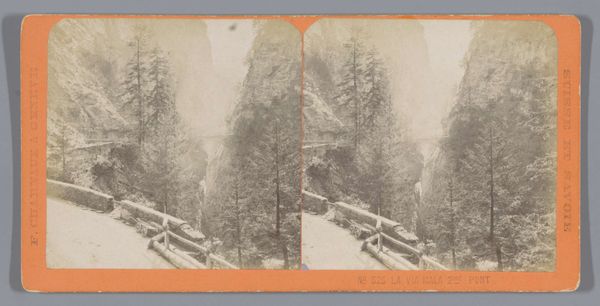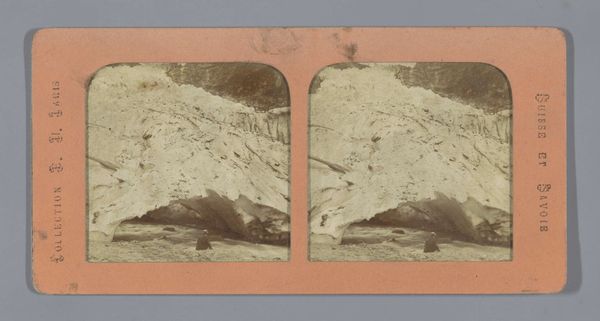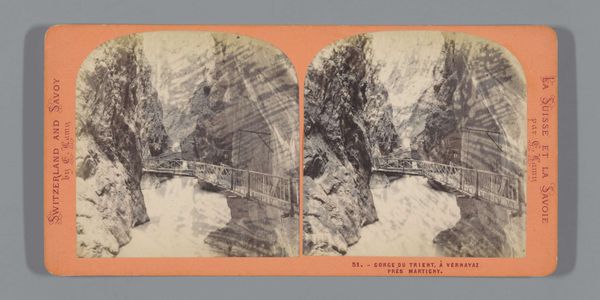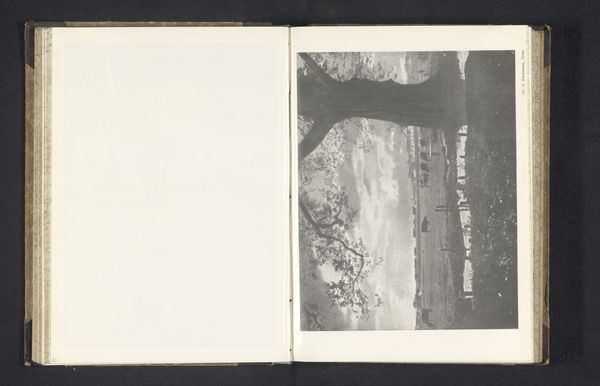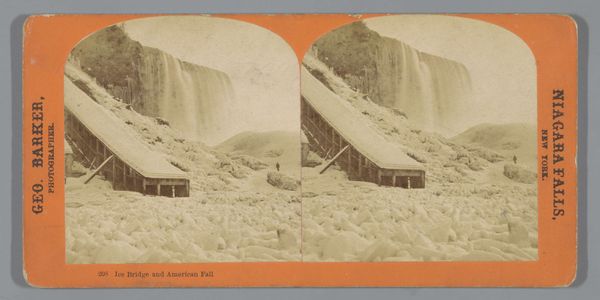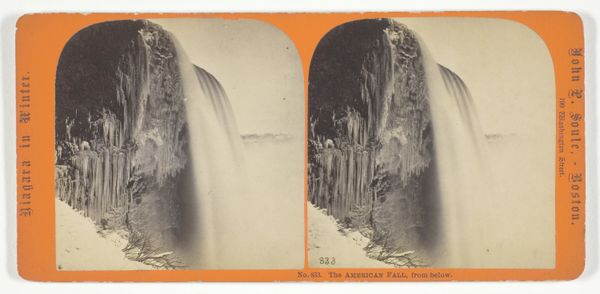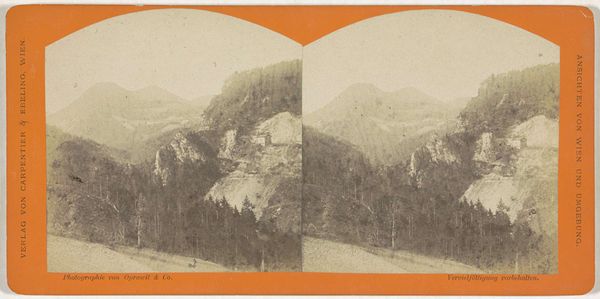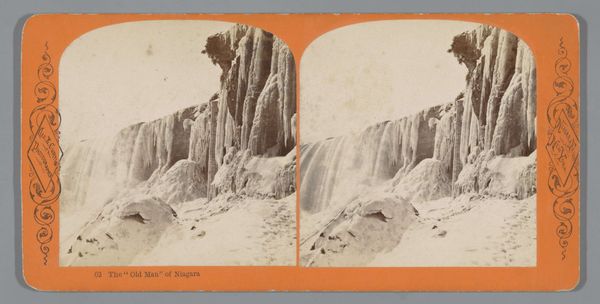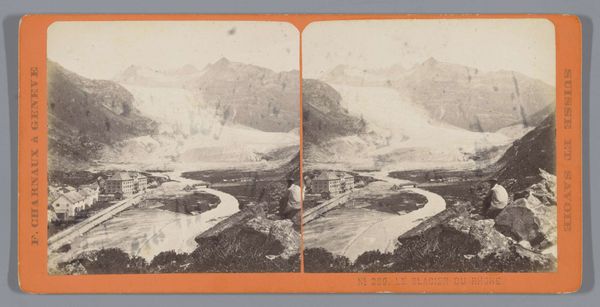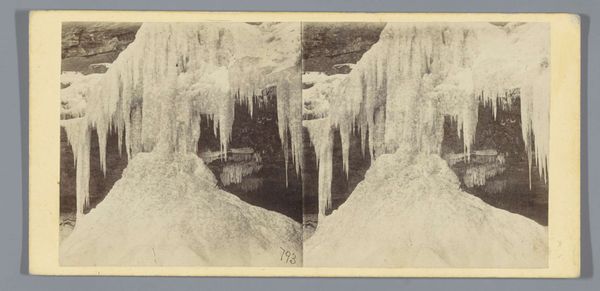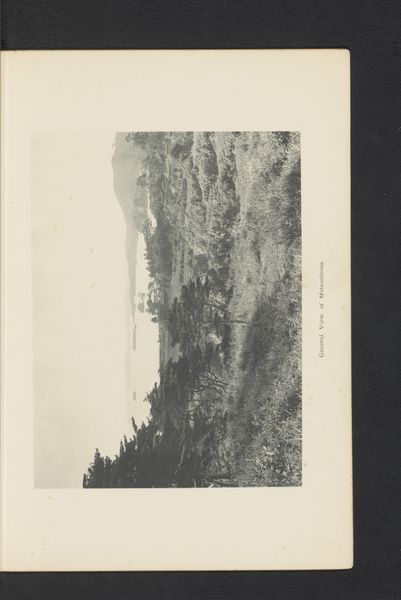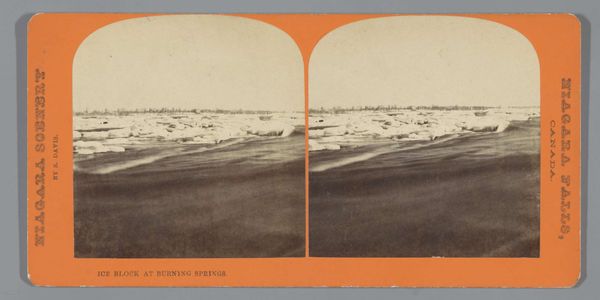
Dimensions: height 84 mm, width 176 mm
Copyright: Rijks Museum: Open Domain
Curator: Well, this strikes a rather glacial note, wouldn't you say? All stark, white, and brooding. Editor: It's a gelatin-silver print titled "IJsformaties voor de American Falls," dating from between 1868 and 1890. It's the work of Saul Davis, documenting a winter scene at Niagara Falls. Curator: Ah, the grand, tamed wilderness rendered… icy. I’m immediately thinking about the consumption of landscape photography in the 19th century and its links to tourism and, really, the commodification of nature itself. The chemical process involved in creating these prints surely left a tangible trace, from the gelatin binding agent to the silver itself, sourced no doubt from mining operations extracting these resources at significant human and environmental cost. Editor: The contrast between the wildness depicted and the constructed experience for the viewer is fascinating, isn't it? You see, I keep returning to how utterly still everything seems despite the water. It's quite disorienting—a roaring cascade frozen solid. It kind of captures that bittersweet tension between awe and vulnerability that nature always inspires in me. I think the frozen scene really creates a timeless feel... a kind of monumentality out of the everyday flow. Curator: Right, this idea of capturing a single moment in a traditionally chaotic scene resonates. Given that gelatin silver prints gained prominence because they allowed shorter exposure times, what’s rendered here is indeed this sliver of arrested time in contrast to the Falls' rushing nature. Furthermore, understanding this image necessitates an investigation into Davis's professional practices. Was he commissioned? What market was he targeting with these views of Niagara? The very accessibility of photography impacted painting and how artists engaged with depicting nature and the sublime. Editor: Perhaps. All that being said, there is something enchanting to witness here: Davis' skillful way of rendering ice—as though he himself understood and worked with it—making it into this ephemeral art, that’s still present after so many years through the chemistry, craft and labor used in capturing that one magical shot. Curator: Well, I find that I might have shifted my gaze towards this artwork in a more attentive way because of this discussion. Thank you for guiding the discussion so well and opening new perspective to this capture of such force. Editor: The pleasure was entirely mine; let us move on to our next masterpiece, shall we?
Comments
No comments
Be the first to comment and join the conversation on the ultimate creative platform.
